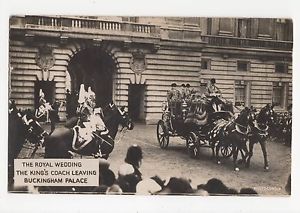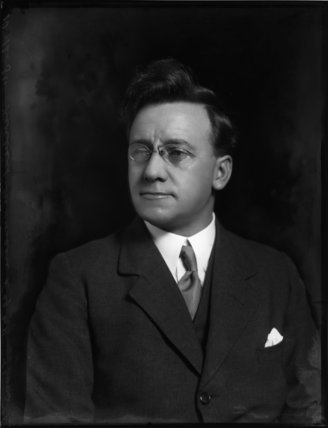by Pete Goddard and Atul Hatwal
When Stafford Cripps got up to speak to Labour students in Nottingham on the 6th January 1934, the reporters in attendance did not expect too much excitement. A brisk refresher on the Socialist League’s plan for an imminently Socialist Britain, then tea and biscuits if they were lucky.
Addressing the audience, Cripps declared,
“I do not believe in private armies, but if the Fascists started a private army it might be for the Socialist and Communist parties to do the same. When the Labour party comes to power, we must act rapidly and it will be necessary to deal with the House of Lords and the influence of the City of London. There is no doubt we shall have to overcome resistance from Buckingham palace and other places as well.”
The press sat up and took notice.
Because Cripps was airing the possibility of a Labour party private army? No. Because he was suggesting Labour join forces with Communists? No.
The Rubicon that Cripps had crossed was in voicing the great unmentionable, “Buckingham Palace.”
Outrage abounded. Within a day, Cripps had had to issue one of the finest political clarifications ever,
“There seems to have been some misconception of what I intended to convey by the term ‘Buckingham Palace’. I most certainly was not referring to the Crown…I cannot understand why anyone should have thought I was referring to the Crown.”
Indeed, the fools. Its obvious Cripps was talking about resistance to socialism from all those other people in Buckingham Palace. The servants maybe. Or the corgis.
Among the NEC there was a collective rolling of eyes at the gaffe. Dalton was apoplectic while Bevin was disgusted. Fortunately for Cripps though, one senior member of the party continued to back him – a member who also happened to be the acting leader – Clement Attlee. Thus Cripps swapped his red flag for a red face but remained free from formal censure.

1934 – Riding out to battle the impending socialist army, Buckingham Palace wondered if it should maybe have modernised its forces
Cripps’ New Year media meltdown didn’t seem to damage the party’s performance in the main political event of the year – the London County Council (LCC) elections in March.
The London Labour party was headed by Herbert Morrison. He was a party moderate who had spoken vigorously against any co-operation with the communists, an assiduous organiser and sported a wicked quiff. What’s not to like?
Under Morrison, Labour campaigned using the strapline “Let Labour rule and London flourish.” They also used a number of extra slogans including the Helen Lovejoy-esque, “For the children’s sake,” and the strangely unsettling, “Show your disgust.”
They did not mention Buckingham Palace.
After the votes were counted, it was a rare piece of good news in an otherwise bleak period for Labour. For the first time, Labour had secured an outright majority on the LCC, winning the most votes ever with a 51% majority.
Even the acidic Beatrice Webb was moved to words of praise,
“Herbert Morrison is the organiser of victory – a long pull and a hard pull lasting 20 years – the final victory doing endless credit to his doggedness, skill and masterfulness.” An assessment he would doubtless have been proud of, once he’d stopped chuckling at “a long and hard pull’.
For Morrison, the lesson of the London contest was that moderation was the way forward.
For the Socialist League, the lesson was that moderation was boring and winning just to tweak capitalism would be too little, too late.
A crisis ridden capitalist model was morphing seamlessly into Fascism across Europe. Ever more countries across Europe were sliding into right-wing dictatorship (Austria had fallen in February) and Britain was likely next. Morrison’s prescription was no way to survive the impending capitalist Armageddon.
Ok, yes, there had been a gradual improvement in the British economic situation in 1934.
And, yes, unemployment was falling.
And if you were being picky, then it was also true that there was a return to economic growth.
But all this was mere evidence. Capitalism was in terminal crisis, dammit. As far as the League was concerned, anyway.
So when, they came together in Leeds for the League conference in May, the mood was militant. They backed a document called Forward To Socialism, which restated their existing platform, this time with angrier, more apocalyptic language. It made everyone feel a bit better, at least.
The Labour leadership’s response was unveiled in July. The NEC’s new platform, For Socialism And Peace, was essentially a restatement of their old programme too. And this meant none of the radical action wanted by the League.
There was to be only limited nationalisation. Full compensation was to be made to stock holders in nationalised companies. And public corporations were to be formed along the technocratic lines of Morrison’s London Passenger Transport Board, without any privileged position for the unions in their management.
It meant neither Labour nor the League had moved an inch since the battles of 1933. Further conflict was inevitable as both sides entered Labour conference in Southport in October.
In response to For Socialism And Peace, the League tabled 75 different amendments. It was a striking challenge. A war of amendment attrition seemed to beckon.
At least that’s what the League hoped, but they were not versed in the black arts of Standing Orders Committee.
The League’s dreams of a titanic struggle for the soul of the Labour party on the floor of conference were tied up and garrotted in red tape. The process of compositing several different amendments together reduced the very specific 75 amendments to a generic and woolly 12.
The most important of these sought to commit the party to fight the election on “a specific programme of action, that enabled, “a decisive advance within 5 years towards a socialist Britain.”
The leadership were able to destroy the League’s case with ease. Hugh Dalton, speaking for the leadership said, “We are asked to accept [this] skeleton statement containing three or four propositions which are not developed in any detail at all.”
Unfortunately for the League, the Standing Orders Committee had ensured all the detail was left on the cutting room floor.
Not that it would have made any difference. If sneaky committee work and reasoned argument failed, the leadership also had the committed support of the union block vote to rely on.
The League hadn’t so much taken a knife to a gun fight, as taken a knife to a tank battle.
Inevitably, the main amendment was overwhelmingly rejected by 2,146,000 to 206,000, a margin of over 10 to 1.
For Socialism and Peace passed almost wholly unchanged and the League retreated from Southport bitter at the chicanery of the Standing Orders Committee and resentful of the union block vote.
A month later the League held a special conference where they debated their future.
The prospects of changing the Labour party through open debate seemed bleak. Faced with the same choice that had confronted the ILP a few years earlier, they too decided their only option was to become a party within a party. They decided to recruit a disciplined mass membership and change Labour through its weight of numbers.
Because that had worked out fabulously for the ILP hadn’t it?
Pete and Atul are not historians
Tags: Atul Hatwal, compositing, Labour conference 1934, Labour history uncut, Pete Goddard, Socialist League, Stafford Cripps, Standing Orders Committee










Once again both informative and entertaining.
Thank you Pete and Atul
Brilliant! Better than a Whitehall Farce. Or a Panto.